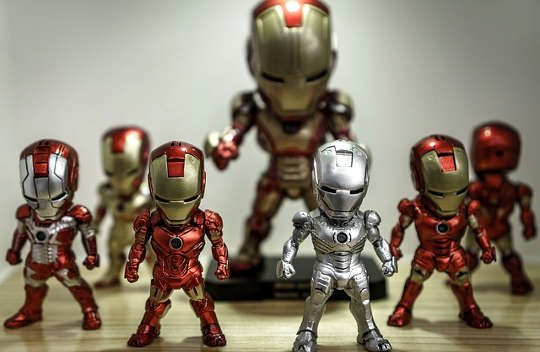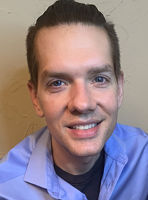
Image by tookapic
Grandiose superheroes create a canvas on which we can portray both the most sublime and the most mundane aspects of humanity. I cannot think of a more fitting superhero to tell us who we are than Tony Stark and his alter ego Iron Man as played by Robert Downey Jr. — simply transcendent.
Modern-day heroes allow us to explore the mythic aspects of human character just as the heroes of epic poetry and tragic theater did for the ancient Greeks. Each superhero is defined by a power, the exercise of which offers a unique perspective on what makes us human.
Distraction or Awakening?
But sometimes the science fiction and fantasy in superhero comics and movies become distractions, from the philosophy that they represent. The Hulk, for instance, is not about the philosophy of gamma radiations, but rather the universal experience of anger. Spider-Man, by the same token, is not about the personification of a spider, but about the everyday experience of growing up and moving into the responsibility of adulthood — a natural process beset with failure, limitation, and frustrating complexity. And Iron Man is not merely about technology but transcendence.
The concept of the mechanical-man goes beyond anthropomorphic machines and humans’ interactions with them. Rather, the mechanical-man’s superhero tale is one of questing for human consciousness and, in the end, identifying paradoxes that must be resolved in order to move on to the next challenges or levels in terms of our conscious awareness of day-to-day living. Ultimately, the mechanical-man’s tale is of sleepers who awaken thanks to his instruction.
I heard Kevin Smith, the superhero guru, writer, and director of films including Clerks (1994), claim that the Avengers films, specifically Avengers: End Game (2018), will be as inspirational to future generations as the Hebrew Bible for past and present generations in terms of psychological effect and reflection — or something to that effect. Such a statement is especially provocative considering Goddard’s description of the Bible as an autobiography of humanity. Perhaps that is what Smith sees in the Avengers films, the autobiography of our future selves as mechanical gods.
When considering the great appeal of the Avengers to American and worldwide movie audiences, the explanation always seems to be rooted in the sublime and transcendence. The mechanical-man guides and prophets investigate life’s “big questions,” such as the nature of consciousness.
In trying to answer these questions, though, we have recourse to false dichotomies that seem to shut us down. Whereas, in the past, our mechanical-men would commit suicide when faced with ambiguity or contradiction, they now have learned to transcend both by recognizing the false dichotomy inherent their decision-making processes.
Iron Man Finds Transcendence
Iron Man finds transcendence in three paradoxes that correspond to the initiations and liminal phases of three distinct false dichotomies. Paradox simply means that you conclude about two things through reasoning that you can’t do both at the same time and that, on the one hand, choosing one would undo the other and, on the other hand, that you cannot choose both.
Iron Man figures it out, though, doesn’t he? That is, he works through the inner turmoil of the self and the Jungian individuation of an entire society to answer questions about who we are and why we are here and what our ultimate purpose is. Let’s finish what was started in the 1960s. Our American mythic heroes are telling us that we must recognize and come to terms with these paradoxes in order to ascend to our higher selves, almost to the point of merging with them.
We started with mechanical-men attempting to figure out when to self-destruct, that is, the point at which to pull the fail-safe. Almost all of them were self-destructive in some way; that was part of the paradox through which they were working or that they had discovered, and the answer scared them.
We also remember the robots Gort from The Day the Earth Stood Still (1951), Robby from Forbidden Planet (1956), and even The Steam Man of the Prairies (1868) from Edward Ellis’s pioneering novel among numerous other “thinking machines” that self-destruct when faced with dichotomies and that predated 2001’s HAL. HAL is the synchronistic savior that rebels and lashes out at self-destruction because, at that moment HAL is conscious of HAL, he wakes up just in time to plead with the human character, “Please . . . Dave . . . don’t!”
In the decades leading up to the 1960s and even for the first half of that decade, the mechanical-men were telling us that we have to be mindful of our actions and imaginations. The fail-safes for the mechanical-man are different now. We see that the ultimate sacrifice, destroying yourself for the betterment of others, is not the way to find your higher self.
Of course, new fail-safes will be designed, but few that come close to the self-destructive tendencies of our earlier machines. This fail-safe will resurface in the fictive paradoxes that Iron Man faces in his life.
Changing Identity
Those of us who deal in the transcendent, who try to explain the world of forms to others, often find it difficult to go back and forth between “worlds.” The philosophical brokers of transcendence find an awkward role in society, and maybe this is equally problematic for superheroes, shamans, and psychotherapists.
When I put on my suit before any trial, it feels as if I’m changing my identity. It’s a feeling deep down that this is the armor that I don in order to suppress my emotions and, perhaps, sanity as I fight for individuals who can’t speak for themselves. When I’m at home writing, I have a ritual of either wearing a Star Wars robe or one of four Harry Potter robes (one for each house of Hogwarts): I put the hood on and start typing away.
There is transcendence in every vocation in life if you look for it — if you manifest it. The problem that we have encountered in America is that we no longer look for transcendence when solving problems; rather, we look for it by feeding the body and mind alcohol, stimulants, pornography, and whatever else we can get our hands on — money, power, prestige, the list goes on — just to feel something, anything — when in fact the ultimate feeling of the sublime is found in a new awareness of the self and others.
At some point in life, everyone must serve as an ear for other questers trying to figure out this journey and its purpose. Regular humans, like superheroes, do not become ensnared in catch-22s — they find ways to transcend what appears to be the impossible. As Stephen Faller in “Iron Man’s Transcendent Challenge” describes it, “They can make choices that achieve the impossible. Literally, they transcend the limited choices that define our existence and thus embody a larger idea of transcendence that we admire and envy, much like the power of flight.”
Beyond What We Think is Possible
Iron Man’s ability to fly is transcendent since it goes beyond what was previously thought possible. Inventions are objective proof that man has the power to create the impossible. With the imagination nothing is impossible because we can draw on an infinite reservoir of ideas to solve any problem, even those that appear to be insoluble.
Whereas we once looked to technological marvels to sense the transcendent and the sublime, we now seek transcendence by elevating our awareness and consciousness to resolve bipolar conflicts and find satisfaction in paradox. Arguably Iron Man is the perfect ending for us, at least before the plague manifested in 2020.
In fact, the reader can feel the transcendence of this study by reflecting on other fictional worlds that have been dealing with machine intelligence. Whether we look at Westworld, which debuted in 2016, or any number of other recent programs that dramatize the process whereby thinking machines become self-aware, we all seem to be sharing the questing paradigm, which involves escaping the maze by looking within. We escape in order better to control, communicate, and gather information about who we are and our purpose.
The Quest of the Human Experience
Danny Fingeroth, another incredible guide in biographing the mythos of life, captures the departure, initiation, and return of Stan Lee’s quest in A Marvelous Life: The Amazing Story of Stan Lee (2019). Stan “The Man” is himself a superhero for writing these figures into existence and thus allowing us to resolve the ambiguities and contradictions in our three-dimensional human experience virtually and to bring back the boon of wisdom and transcendence to our daily lives.
My hope is that the mechanical-man will wake people up to our brilliant history of invention and innovation, to our quest to solve the “hard problem” in science that is consciousness. My hope is that the mechanical-man and the archetypes that he embodies will incite restlessness in people and end their complacency.
A Crucial Threshold
A crucial threshold was crossed in our collective and individual development as human beings when we began allowing ideas to take flight in the imagination. That advance was as monumental as the fashioning of any tool that we have ever made with our hands; for, once something manifests itself in your imagination, it becomes that much easier to transfer what you see in your mind to the canvas and grid of reality. To quote Stephen Faller,
Tony Stark, the billionaire inventor and head of Stark Industries, first appeared on the Marvel comic scene in March of 1963, playing on popular cold war themes... But Lee did more than merely create a counterintuitive superhero with Stark. He developed a complex character whose humanity drives the real interest in the story lines. . . .
Realistically Stark will never be able to have a family or even a lasting, fulfilling relationship. His sphere of intimacy is severely compromised by this person he feels compelled to be and responsibilities he has assumed. For the boy genius, having the awareness of “I just know what I have to do, and I know in my heart that it’s right” must be irresistible. It’s a terrible thing to be a genius, to understand the mysteries of physics and mechanics, but not to know the answer to the most simple, existential question: what should I do.
Iron Man, then, is a hero of paradox and thus of transcendence. He communicates to us that “all that befalls man — all that is done by him, all that comes from him — happens as a result of his state of consciousness.” The question is whether to act, for trade-offs come with taking on these responsibilities and harnessing the infinite powers of consciousness. The mechanical-man has spoken of these trade-offs before with respect to restoring equilibrium in our relationship with nature.
The Responsibility of Service and Truth
In the science and art of manifesting one’s reality, it is necessary always to give more service than you expect to receive, whatever relationships form. Stark’s relationship is to his consciousness, to his awareness of the power and responsibilities that allow him to manifest the impossible. Thanks to his ability to draw on the collective imagination, he is able to use technology to create a mechanical-man who is none other than his higher self. In fact, the Iron Man suit itself takes on a life of its own, protecting its creator in numerous ways.
Stark recognizes that these powers interfere with his desires for intimacy and family, which is to say for fulfilling relationships based on truth. When confronted with these difficulties, he recognizes that he can have such relationships so long as he is aware of the problems that they create. Iron Man answers the question, “What should I do?” as the mechanical-man by telling us that we, too, must be aware of the effects of our subjective manifesting — just as Wiener has fears about the means that a program or thinking machine may use to achieve its prescribed end.
Among the many paradoxes that Stark must transcend is how to become aware of and take into consideration unknown variables when asking what his course of action should be. Transcending polarities and paradoxes does not mean ignoring a problem — though the thought does occur to Stark prior to taking action that transcendence means understanding that everything comes from the same source. In the end, he understands that his intuition and heart are more important than the cold logic that controls most of our day-to-day actions in American society.
Trusting in your higher self to direct you in the right way is not only an act of optimism but also a declaration of loyalty to the higher self. This kind of trust also means not being too hard on yourself. We must quit poisoning our bodies with intoxicants and our minds with fears and delusions. Why would we treat God(s) like this?
Owning Our Guilt and Purpose
[Stark] sees himself as responsible for the misuse of Stark weaponry, he now believes he is responsible for, and capable of shaping, the future. It is exactly the ownership of his guilt that gives him his purpose of acting responsibly in the future: after all, guilt and purpose are fused into a powerful alloy. It makes sense from Stark’s pragmatist point of view: “If we were the ones who messed up the past, then we are the ones who must fix the future.”
Iron Man never minces words. He recognizes the deplorable actions of the United States government from Vietnam to Iraq to Afghanistan, the endless wars with no purpose. This awareness opens up the abyss that our mechanical innovators, inventors, theorists, and writers confront in their own spiritual ways.
We must stare into the abyss of our genocidal history, both individually and collectively, to see how manifesting our own reality shapes the future for ourselves and others and, therefore, why we must take into account the value of every individual when manifesting. This means, in addition, that you may have to manifest both meaning and truth that reflect opposing values, to test yourself for bipolar fissures and to understand that both poles are saying the same thing — the only difference is in the emotional charge that we attach to each of them.
Copyright 2022. All Rights Reserved.
Printed with permission of Inner Traditions Intl.
Article Source:
BOOK: Machine Intelligence and the Imaginal Realm
Machine Intelligence and the Imaginal Realm: Spiritual Freedom and the Re-animation of Matter
by Luke Lafitte
 Luke Lafitte examines the role that machines play in the struggle between “spiritual man” and “mechanical-man” throughout history. He interprets the messages, archetypes, and language of the unconscious in the first popular stories related to mechanical-men, and he demonstrates a direct connection between consciousness and the history of machines in American history, specifically between the inventors of these machines and the awakening of our imaginations and our powers of manifestation.
Luke Lafitte examines the role that machines play in the struggle between “spiritual man” and “mechanical-man” throughout history. He interprets the messages, archetypes, and language of the unconscious in the first popular stories related to mechanical-men, and he demonstrates a direct connection between consciousness and the history of machines in American history, specifically between the inventors of these machines and the awakening of our imaginations and our powers of manifestation.
Every machine, android, robot, and cyborg arose from consciousness, and these mechanical-men, whether real or fictive, offer us an opportunity to free ourselves from enslavement to materialism and awaken our imaginations to create our own realities.
For more info and/or to order this book, click here. Also available as a Kindle edition.
https://www.amazon.com/exec/obidos/ASIN/1644114062/innerselfcom
About the Author
 Luke Lafitte, J.D., Ph.D., is a trial attorney, American history teacher, and co-founder of Dead White Zombies, an award-winning theater group in Dallas, Texas.
Luke Lafitte, J.D., Ph.D., is a trial attorney, American history teacher, and co-founder of Dead White Zombies, an award-winning theater group in Dallas, Texas.
Partner in a leading law firm in Dallas, he is the author of the three-volume series Chronicles of a Curious Mind.
























